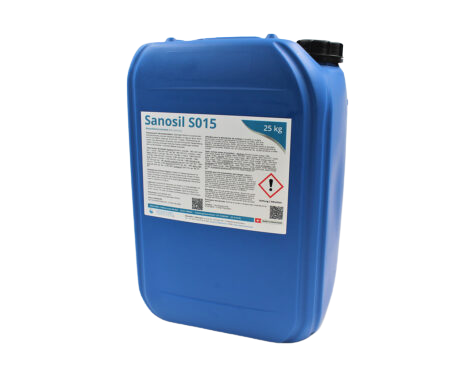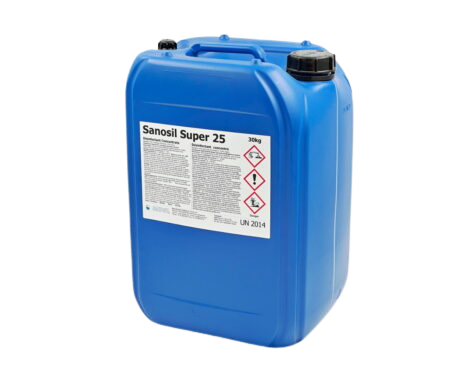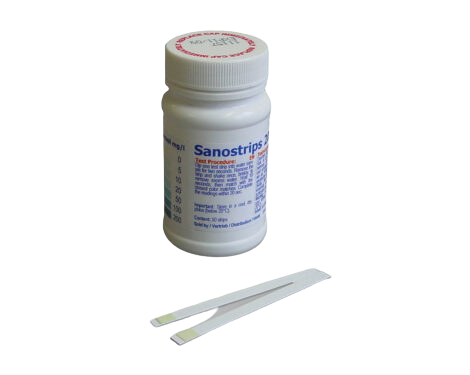[breadcrumb]
Water treatment with vegetable disinfectant products in industrial leaf-lettuce production
Leaf lettuce is a delicate food in several respects – both in terms of its flavour and from a microbiological point of view. Since lettuce comes directly from the field, is not thermally pre-treated and does not undergo any other major processing, washing it using vegetable disinfectant products is extremely important.
Water treatment / disinfection with vegetable disinfectant products: why is it important?
Although lettuces and vegetables have traditionally been sold directly after the harvest without further antimicrobial fruit and vegetable treatment, the trend towards convenience food is resulting in increased demand for processed, ready-to-eat vegetables. In other words, the vegetables and lettuce are washed (preferably with the addition of vegetable disinfectant products), peeled if necessary, chopped and packed in plastic bags.
They are often also deep-frozen for a longer shelf life. Vegetables such as diced or chopped onions contain less water than lettuce, which makes them much more resistant to spoilage.
Lettuce, on the other hand, is quite susceptible to germs, and since it is not heated before consumption, a reduction in the initial germ count is desirable not only for an extended shelf life, but also for increased food safety.
The standard procedure to remove soil, dust and other adhering dirt from lettuces and vegetables is to wash the crops. In addition to cleaning them by washing lettuce e.g, a general reduction of germs is desirable in order to increase the shelf life of the leaf lettuce once inside the plastic bag.
Unfortunately, the water in which the lettuces are immersed often leads to even greater contamination by distributing the germs evenly over each lettuce. The mechanism for washing lettuce and other vegetables with water is the same.
Although UV lamps, ozonisers and/or filters can selectively reduce the bacterial load in the vegetable washing water, they cannot prevent high concentrations of pathogens from forming in the water.
[expander_maker id=”2″ more=”Read more” less=”Read less”]Water treatment / disinfection when washing lettuce: how to achieve this?
By adding vegetable disinfectant products such as Sanosil Super 25 to the water used for washing (provided that local laws permit the addition of hydrogen peroxide as an oxidising agent to reduce the amount of oxidisable organic material in the water) in the vegetable washing procedure, a reduction of germs and thus a longer shelf life for the lettuce can be achieved. For leaf lettuce treated with 50 – 100 ppm of Super 25, the shelf life is extended by two to four days depending on the initial germ count.
The fruit and vegetable disinfectant can be easily dosed directly into the water used for washing with the aid of a dosing pump. A dosage of 50 – 100 ml Sanosil Super 25 is usually applied per cubic metre of water. The content of fruit disinfectant Sanosil Super 25 can be easily monitored with Sanopstrips 200.
Important: any existing UV disinfection systems will augment the effects of Sanosil Super 25 vegetable washing solution and can be operated in parallel with excellent results. This is even explicitly recommended in the case of more severe contamination.
Washing fruit
For example, in order to reduce losses of citrus fruits due to rot and above all mould, an immersion bath containing effective chemicals, such as naphthalene acetic acid (NAA) or chloramizole (which are, however, questionable with regard to human health and the environment) is often used in practice.
However, these products are strongly suspected of being carcinogenic and harmful to the environment. The use of Sanosil Super 25 represents an alternative to these products and has a much more environmentally friendly profile. Brief immersion in a Sanosil Super 25 solution – or spraying if necessary – greatly reduces the number of mould spores and putrefactive bacteria on the surfaces of the fruit.
In an increasingly competitive world, reducing harvest losses is an important agricultural goal. In the case of easily perishable fruits, such as tomatoes, apricots and peaches, up to 39% of the harvest spoils before it can be sold due to consequential damage.
A reduction of germs without the use of demonstrably harmful chemicals such as NAA and CO can therefore play an important role in avoiding food waste in fruit and lettuce production – without being forced to choose between the lesser of two evils. [/expander_maker]



